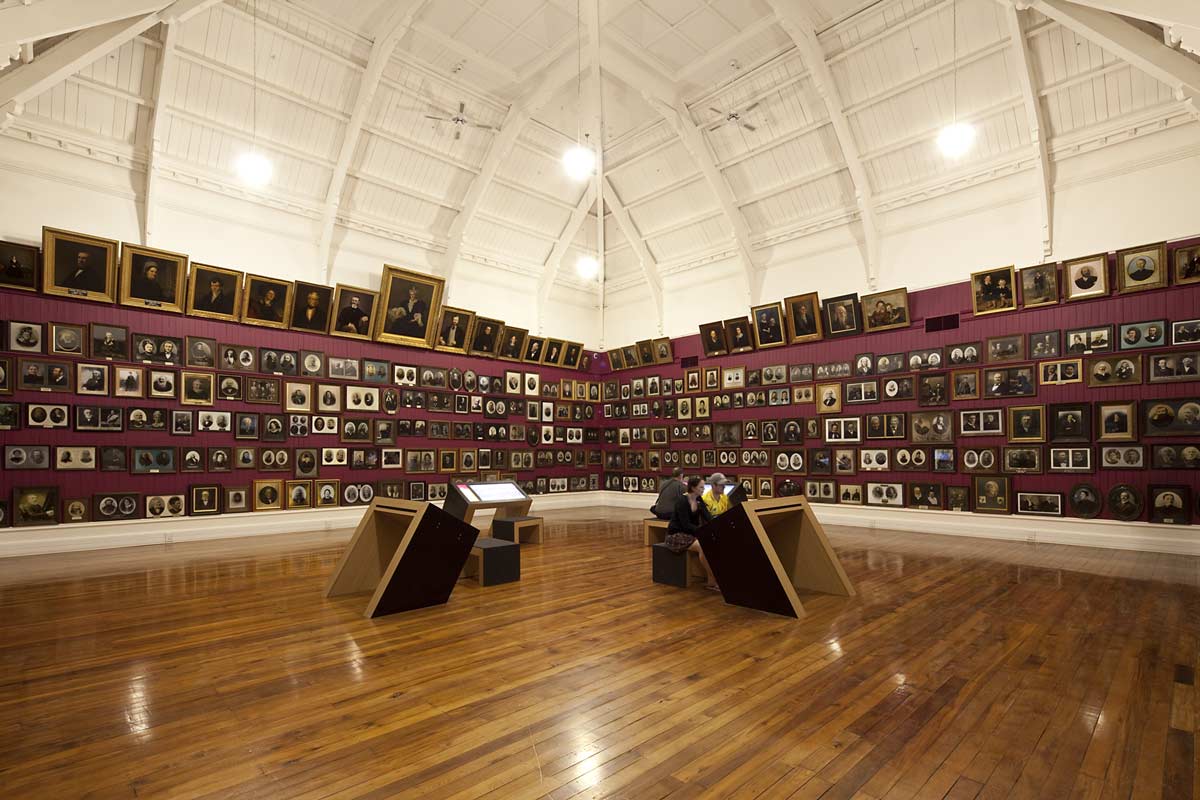This room is the historic heart of the Museum. When it opened in March 1908, the Museum consisted of just this room for display and an attached hall for social gatherings. A photograph taken at the opening shows the walls already partly hung with portraits of early settlers. Within a decade the portrait display covered every wall surface, from floor to ceiling.
Together the assembled pictures made a stunning visual memorial to Otago’s pioneers. Stern Presbyterian faces glowered down from the walls as their descendants trooped through to pay tribute to the patriarchs and matriarchs of the early settlement. This room was much like the ancestral embodiment of a Maori meeting house – the whare tipuna of the Scottish settlers. Its purpose was neatly summarised by the Otago Early Settlers Association motto: ‘Reanimate Otago’s Pioneers to fame undying through the dying years.’
Over 100 years later, the Gallery is still fulfilling this role. It was a lucky coincidence that the mid-19th-century settlement of Otago coincided with the development of photography. The new technology meant that images of the pioneers could be captured for posterity. The Early Settlers Association realised the historic importance of such photographic portraits and put a huge effort into collecting them. Thanks to their efforts, we can survey the faces of the people who developed Otago from its earliest days.
The portraits are displayed here in chronological order of the settlers’ arrival, along with details of their ships, who they married, and their places of settlement. The pioneers look down on us from a position of superiority. It was their labours, they seem to say, that gave us all the opportunities we enjoy in Otago today. Even those visitors with no connection to this place can feel the power of their scrutiny. They crossed the world’s oceans to create a new and better society in this new world destination. What are we making of their legacy?
